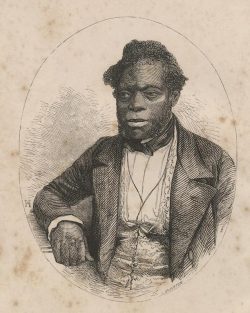 AN important new display at Dorset Museum & Art Gallery reveals the little-known story of John Brown, who escaped slavery in the USA and lived in Dorchester during the 1860s.
AN important new display at Dorset Museum & Art Gallery reveals the little-known story of John Brown, who escaped slavery in the USA and lived in Dorchester during the 1860s.
On show until 30th May, the exhibition has been curated by Jordan Cole, a student at Bath Spa University, and uses research from a number of sources to piece together Brown’s story.
John Brown was born into slavery in Virginia, USA around 1811 and faced significant trauma. Through resilience and determination, he escaped in 1845 via the Underground Railroad to Michigan, where slavery had been abolished.
He later recalled: “I did know that if my master caught me and brought me back, I should get perhaps paddled or scourged nearly to death.”
In 1850 Brown moved to England to live as a free man. Like others who had escaped and emigrated to the UK, Brown went around the country giving lectures on what he had experienced, and the lectures helped raise support and funds to end the enslavement of people in the US. His book Slave Life in Georgia (1855) was published with the help of the British and Foreign Anti-Slavery Society.
He spent 13 years living in the southwest, including from 1865 until 1870 in Dorchester where he made a living as a herbalist, living in Durngate Street. He ran several advertisements marketing cures for a range of ailments which included testimonials from customers, detailing how effective his treatments were.
In 1868, while living in Dorchester, he gave a talk at the town’s Corn Exchange about his experiences of being enslaved, and to advocate for recently freed black people in the USA.
During the time Brown spent in the South West (which also included Yeovil and Trowbridge), he filed three court cases, mostly relating to his business and lack of payment from customers. In one, the judge warned the plaintiff he shouldn’t have trusted Brown to treat him, due to ‘the cunning generally ascribed to black men’. However, in a different case, the judge stated that ‘the black man must be protected as well as the white one’ and ruled in Brown’s favour.
The exhibition is part of a series of projects Dorset Museum & Art Gallery will be working on over the next few years to research and reveal hidden histories, as part of their funded work in the Wessex Museums Partnership.
Image courtesy of Hargrett Rare Book and Manuscript Library/University of Georgia Libraries.